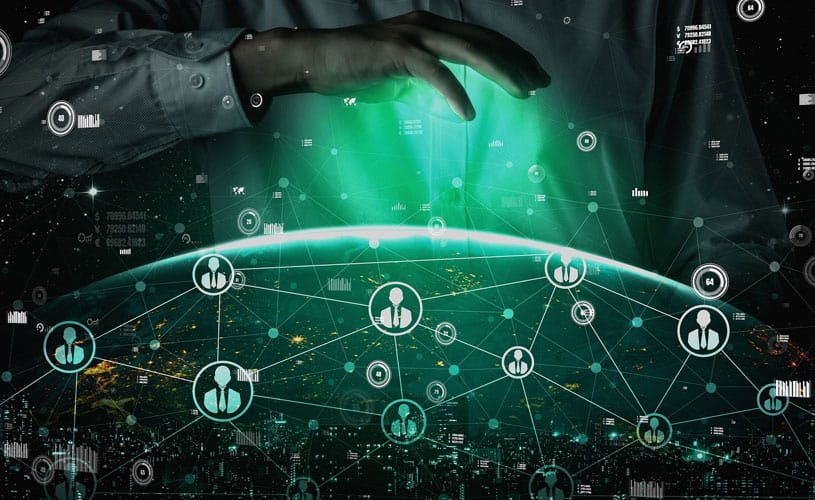Personalization’s Role is Key to Success in the CX Game
Traci Curran
October 19, 2022

A recent McKinsey study found that over 70% of consumers expect a personalized interaction with the brands they engage with, and 76% have said they’re frustrated when this doesn’t take place. This represents a razor-thin edge for businesses, who can risk losing those frustrated customers to direct competitors if their personalization efforts aren’t met.
Businesses are doing more than ever to create exceptional experiences for customers to drive and nurture loyalty and prevent them from slipping away to the competition. Businesses in heavily consumer-driven industries, such as retail, must face the fact that many different marketing and buying channels exist and that customers have more options to choose from when it comes to how and where they spend their money.
As a result, a renewed focus on making authentic, direct connections with customers and engaging with them in meaningful ways is a critical piece of the customer experience strategy. That’s why it’s important to establish strategies to meet customers where they are and give them what they need along the customer lifecycle. A personalized customer experience approach that’s at the front and center of an organization’s marketing and sales strategy sets them up for long-term success.
Personalization isn’t just an important piece of customer experience (CX), it’s the element that could make the difference between a customer for a moment and a customer for life. As products continue to move toward subscription pricing, customer longevity is the key to a company’s success. Let’s take a look at the ways personalization can be woven into the fabric of CX strategies for any business.
The Role of Personalization in CX Today
The McKinsey study also unpacks a particularly crucial reason why personalization must be prioritized: 75% of consumers have either switched stores, tried a new product, or tried out a new buying method during the COVID-19 pandemic. This spotlights just how important it is for brands to get CX right. With the overwhelming majority of shoppers saying they’re happy to try out new avenues for their purchases, brand loyalty now comes at a premium.
Consumers either expect their behavior and preferences to be known to the organizations they do business with or it becomes a subconscious expectation which translates to an experience they’ve grown accustomed to, but don’t realize it. As such, the onus is on CX and marketing teams to have a complete picture of who their customers are, learn what their needs and wants are, and how to personalize connections with them in memorable ways. Critical data points like prior purchase history and communication touchpoints are all needed to paint a 360-degree view of buyers, and this data must be sifted through and analyzed in a way that can point the arrow to their needs.
Businesses must ask themselves if they have this data, if it’s easily accessible, and if they have the systems in place to turn the data into a personalized, relevant experience for their customers. Doing this takes a well-architected tech stack and a CX team with the creativity and experience required to deliver impactful experiences.
Acting on Data
Over three-quarters of respondents (78%) to the McKinsey study said that personalized communications on their buying journey made them more likely to go back and repurchase from the brand.
This seems obvious, but it’s something that brands can often forget, especially when taking a ‘spray and pray’ approach to customer communications. Simply adding a customized first and last name to an email announcing a sale that’s being blasted out to an entire customer base is not going to come across as “personalized.” Rather, these approaches tend to leave customers feeling like they’re just a number in a spreadsheet and don’t offer them anything new in their buyer journey.
To avoid these situations, businesses must dig ixnto the data to create a narrative for more selective segments of customers. In the example above, rather than blasting every customer in the database with an email about a sale, the business could target those who have shown tendencies to convert on purchases made during price reductions, or they could target an audience who routinely buys specific products. In addition, an affinity analysis can be performed to learn customer behavior and predict a customer’s next move. Purchase history and buying patterns can help inform pricing strategies and optimize future engagement.
From a technology standpoint, this can come in the form of SaaS-based solutions that offer ways to easily create tailored customer experiences. Actian Data Platform offers a Next Best Offer recommendation engine, which combs through the customer data to make better suggestions around offers that customers would likely want to receive after certain purchases. Tools like this increase engagement among customers, and subsequently drive loyalty and brand affinity.
Personalization can be tricky to get right, especially as most businesses are trying whatever they can to be unique and relevant to their customer base. However, marketing campaigns need to be optimized to get the most engagement out of audience segments to nurture them at each step of their buying journey. Without optimizing these campaigns, businesses run the risk of not getting ROI for their marketing campaigns.
With a renewed focus on optimized marketing campaigns and personalization, businesses can leverage their customer data to create more impactful experiences that drive loyalty and keep people coming back for more, following satisfying and personalized brand experiences.
Subscribe to the Actian Blog
Subscribe to Actian’s blog to get data insights delivered right to you.
- Stay in the know – Get the latest in data analytics pushed directly to your inbox.
- Never miss a post – You’ll receive automatic email updates to let you know when new posts are live.
- It’s all up to you – Change your delivery preferences to suit your needs.
